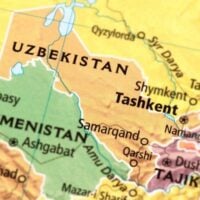Deadline: 29-Aug-24
The U.S. Department of Housing and Urban Development (HUD) issues this Notice of Funding Opportunity (NOFO) to invite applications from eligible applicants for the Youth Homeless Demonstration Program.
The goal of the Youth Homeless Demonstration Program (YHDP) is to support selected communities in the development and implementation of a coordinated community approach to preventing and ending youth homelessness. This community planning approach supports the foundations outlined in All In and will guide communities in designing solutions that match the needs in their community, and sharing that experience with and mobilizing communities around the country toward the same end. The population to be served by this demonstration program is youth experiencing homelessness, age 24 and under, including unaccompanied youth and pregnant or parenting youth who are experiencing homelessness.
HUD will share demonstration outcomes and make homeless assistance resources publicly available to accelerate efforts to prevent and end youth homelessness nationally. In addition, HUD, and to the extent possible, its Federal partners, will work to accelerate HUD and the public’s learning related to youth experiencing homelessness and the concepts of:
- Housing First;
- Assessment and prioritization;
- Coordinated entry;
- Risk and protective factors for youth homelessness;
- Diversion from child welfare and criminal justice;
- Success in education and employment;
- Serving survivors of violence, including trafficking;
- Promoting equity and cultural sensitivity;
- Serving LGBTQ+ youth, youth under the age of 18, and pregnant and parenting youth; and
Strategic Goal 1: Support Underserved Communities
- Fortify support for underserved communities and support equitable community development for all people.
The demonstration has seven primary objectives:
- Prevent and End Youth Homelessness. Provide funding, regulatory flexibility, and technical assistance to help communities develop housing and services for youth experiencing homelessness and make youth homelessness rare and, if it occurs, brief and non-recurring.
- Build national momentum. Motivate state and local homelessness stakeholders and youth services providers, including Runaway and Homeless Youth providers across the country to prevent and end youth homelessness by forming new partnerships, addressing system barriers, testing promising strategies, and evaluating their outcomes;
- Promote equity in the delivery and outcomes of homeless assistance. Recipients should promote equity throughout the community’s youth homeless response system for youth who are disproportionally more likely to experience homelessness, such as Black, Indigenous, Hispanic, and LGBTQ+ youth. Awarded communities will promote equity throughout their youth homeless response system and all YHDP projects will measure and demonstrate equitable delivery and outcomes.
- Highlight the importance of youth leadership: Demonstrate effective models of strong leadership and agency by youth with lived experience in the community. Create replicable best practices of youth leadership for other communities.
- Evaluate the coordinated community approach. Evaluate coordinated community approaches to preventing and ending youth homelessness, including local and state partnerships across sectors and other coordinated operational planning;
- Expand capacity. Expand community capacity to serve youth experiencing homelessness (particularly by using a Housing First approach), pilot new models of assistance, and determine what array of interventions is necessary to serve the target population in their community;
- Evaluate performance measures. Evaluate the use of performance measurement strategies designed to better measure youth outcomes and the connection between youth program outcomes and youth performance measures on overall system performance for the Continuum of Care (CoC); and
- Establish a framework for Federal program and Technical Assistance (TA) provider collaboration. Determine the most effective way for Federal resources to interact within a state or local system to support a coordinated community approach to preventing and ending youth homelessness.
Funding Information
- Estimated Total Program Funding: $ 72,000,000
- Award Ceiling: $15,000,000
- Award Floor: $600,000
- Estimated Project Start Date: 10/01/2024
- Estimated Project End Date: 09/30/2027
- Length of Project Periods: 24-month project period and budget period
Eligible Applicants
- City or township governments
- State governments
- Special district governments
- County governments
- Additional Information on Eligibility:
- The Collaborative Applicant can apply for any community located within its CoC’s geographic area. The Collaborative Applicant can also apply for multiple communities located within its CoC’s geographic area; however, HUD will not select more than one community within a CoC’s geographic area. Project application: Project Applicants that are designated during the application process by the Collaborative Applicant or its designee are eligible to apply for grant funds. The Collaborative Applicant may apply for projects under this Demonstration as well. The Collaborative Applicants that are not Unified Funding Agencies (UFAs) may also designate an eligible applicant to be the recipient of the planning grant. For a dedicated HMIS grant, the project application must either be from the UFA (when there is a UFA for the community) or the HMIS Lead (when there is no UFA for the community) that will be the grant recipient.
For more information, visit Grants.gov.









































